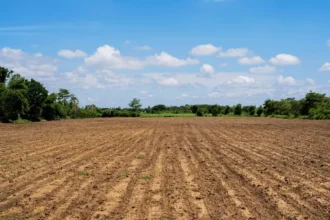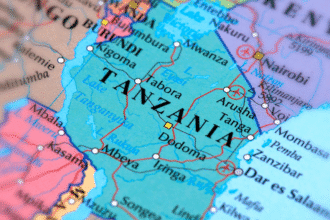The 26-year-old mother of six, Fatima Yakubu, is still shocked that she and her six-year-old son escaped the disastrous Alau Dam collapse in northeastern Nigeria. After days of heavy rain, Borno’s capital, Maiduguri, was underwater, and their house was south of that. Fatima remembers the early hours of the tragedy quite clearly.
- Why Were the Early Warnings About the Dam Ignored?
- What Were the Immediate Impacts and Rescue Efforts?
- How Are Displaced Families Coping in the Camps?
- What Steps Are Being Taken by the Government and Aid Agencies?
- What Are the Health Risks and Challenges Moving Forward?
- When Will the Dam Be Repaired and What Is the Path to Recovery?
“I felt wetness on my legs as I woke up one morning. I was pretty afraid as it was rising rather quickly. I ought to die with my kids.
Her calls for aid tore through the night. Luckily, some guys living nearby heard screams and came to save her family from the approaching waves. “I am grateful to God,” she remarked.
Now homeless, Fatima and her children have sought cover at Bakassi Camp, one of four makeshift shelters erected for the hundreds of people driven from their homes by this tragedy.
Why Were the Early Warnings About the Dam Ignored?
Locally, the Alau Dam, on the Ngadda River around 20 km (12 miles) south of Maidugiri, was already reason for concern. Days of locals, she was nervously observing as the reservoir’s water level increased slowly. They raised their worries to authorities, but their fears were discounted.
One local remarked, “A delegation did go out to inspect the dam,” “but they told us there was nothing to worry about.”
Still, the framework started to crack a few days later. In the middle of the night, the dam collapsed and sent a rush of water across a great swath of Maiduguri. In a few hours, about half of the city was covered. Most of her neighbors were asleep when the calamity happened.
What Were the Immediate Impacts and Rescue Efforts?
Authorities rushed to save lives and retrieve dead caught in flooded buildings as morning broke. Public buildings like jails and hospitals suffered greatly. More concerning, however, some animals escaped the state zoo, and an estimated forty percent of them died during the floods.
“This is an unparalleled crisis. A National Emergency Management Agency (NEMA) spokesman said: “This is the worst flood disaster Borno State has experienced in three decades.”
Five towns remain submerged while floodwaters start to ebb in certain places. Along the well-liked Lagos Bridge, hundreds of people can be seen wading through knee-high waves; automobiles are mainly immobilized.
Just days after resuming from the extended holiday, the state’s administration has mandated schools to close for two weeks, further aggravating everyday life’s disturbance.
How Are Displaced Families Coping in the Camps?
At Bakassi Camp, exposed to the elements, Fatima Yakubu and her children share a single mat. She shields her one-month-old infant from mosquitoes with her headscarf, as there is currently no cover. They are still awaiting appropriate tents, just as many other displaced households do.
There is little food; hence, desperation is rising. “The camp lacks enough food and necessities. People hurry for food all the time, Fatima said.
Hungry individuals swiftly surrounded a car on Wednesday night, bringing loaves of food to the camp and grabbing whatever they could see through the windows.
“My children ate just one meal today from one dish. Fatima said they were still hungry while I hadn’t eaten, underlining the great hunger afflicting the camp.
Also residing at Bakassi Camp, 23-year-old mother Aisha Muhammad emotionally detailed her circumstances. “My son and I have only taken kunu [a local drink made from sorghum or maize] today,” she remarked. Right now, my primary worry is finding something to eat.
What Steps Are Being Taken by the Government and Aid Agencies?
In addition to what the state government currently offers, NEMA has vowed to start distributing food. But help is slowly arriving, and there is a tremendous acute need. Visiting Bakassi Camp on Wednesday, Borno state governor Babagana Zulum paid the head of every family 10,000 naira ($6) as a makeshift relief gift.
“He gave every family 10,000 naira as a quick fix,” said a state official. “Although the government is working on something more sustainable, this is what we can provide right now.”
NEMA estimates that the four camps currently contain about 6,000 people, but the number of those in need is most likely significantly higher. Using whatever materials they can find, many people build temporary shelters on roadsides, under bridges, in trucks, and even under cars.
What Are the Health Risks and Challenges Moving Forward?
The city’s seriously degraded wastewater infrastructure raises growing health issues. Given the polluted state of many water sources, waterborne illnesses carry significant risk. International institutions such as the World Health Organization (WHO) have promised their cooperation, while Governor Zulum has declared the establishment of a particular health team to evaluate the matter.
Hunger remains a primary concern, however. Families that have lost their companies, houses, and means of subsistence now struggle to eat.
“We are doing everything we can to assist,” a NEMA official stated. “But it’s hard to ascertain the whole degree of the damage until the floodwaters recede.”
When Will the Dam Be Repaired and What Is the Path to Recovery?
It is unknown when or how the Alau Dam will be rebuilt, and emergency agencies and relief workers must negotiate the tragedy’s aftermath.
A state spokesman said, “The dam reconstruction is a massive project.” The Borno state government cannot handle it alone; the federal government owns the dam, and rebuilding it will require significant help.
Thousands of families like Fatima’s remain homeless for now, battling sickness, malnutrition, and weather exposure. Though help is pouring in, Maiduguri, a city devastated by floods, has a long, rugged path ahead.
As a flood survivor, Fatima Yakubu said: “I thank God we are still alive. Now, though, we have to learn to live once more.








